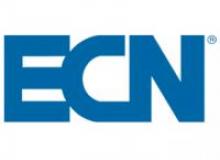
With 380 million connected cars projected to be on the road by 2021, how will designers address the increased network strain?
By Bob Noseworthy, Chief Engineer, University of New Hampshire InterOperability Laboratory (UNH-IOL)
This question presumes a situation I’m not yet convinced will be a reality, principally due to lack of the necessary infrastructure buildout. In a mere four years will we have 380 million “connected cars?” What is a Connected Car? How’s it differentiated from a cell phone with wheels?
Ever more capable vehicles emerge with more ECUs, enabling semi-autonomous driving to fully piloted vehicles. But ponder the meaning of Connected Car. Perhaps it’s an “Internet” connected vehicle, with high-speed bi-directional communications. Such capability enables apps to lock doors, find your car, summon your self-driving car, or stream infotainment. Cellular technologies (4G) support this today, as with mobile phones, but cellular isn’t optimal in all cases.
Connected Cars can benefit significantly simply by receiving information from roadside infrastructure. One example is the SPaT Challenge, seeking to enable 20 intersections in all 50 states with vehicle to infrastructure (V2I), or rather “I2V,” communication capability to the vehicle. Such “Signaling Phasing and Timing” (SPaT) information can enable better awareness of signals, and fuel optimization. Dedicated Short Reach Communication (DSRC) enables V2V or V2I, to support 380 million vehicles by 2021, a substantial challenge is simply the scale of infrastructure build-out still required. As the SPaT challenge highlights, a goal of only 20 intersections per state by 2020 is the current realistic target. DSRC seeks to provide reliable low-latency communications channel to vehicles for such things as crash avoidance alerts, first responders or traffic conditions. Cars with DSRC radios built in are only now emerging.
Vehicles are moving to internal high-speed automotive Ethernet networks, enabling rapid low-latency deterministic communication within the vehicle, and through gateways to communicate between vehicles, and to infrastructure. Such gateways may be wireless (5G, DSRC, or WiFi) or a high-speed wired connection in a mechanic’s shop for updates and diagnostics.
